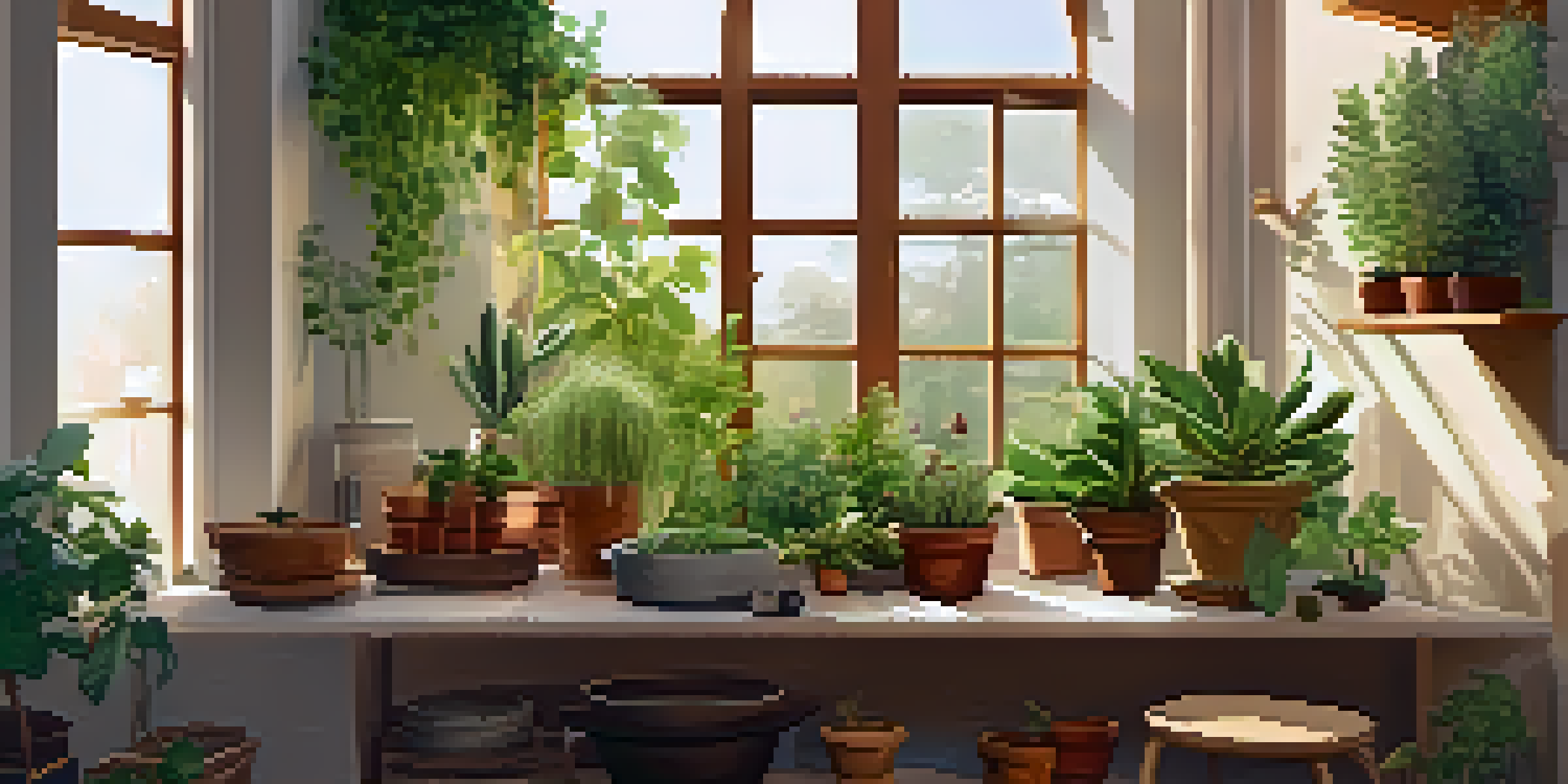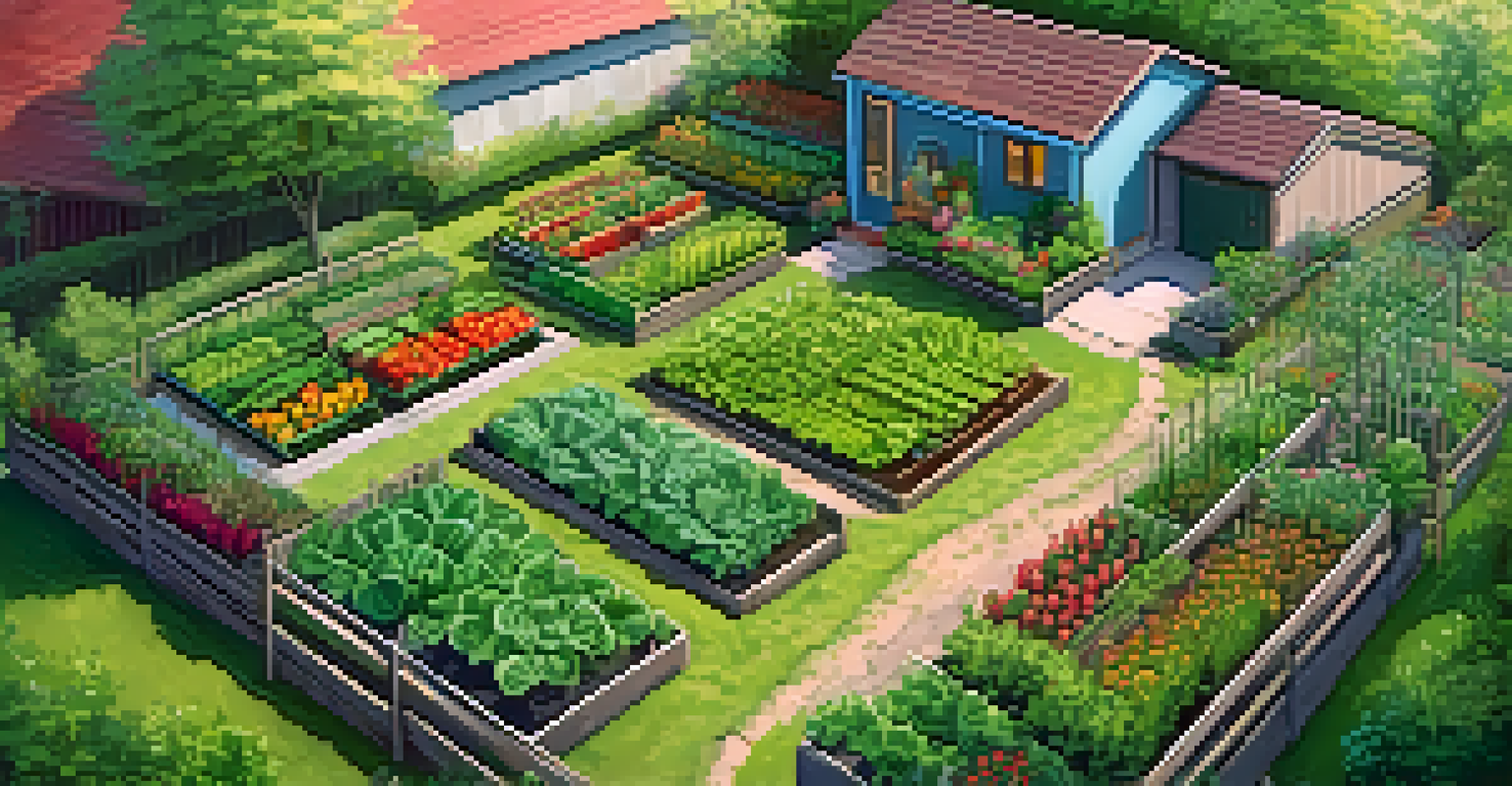Permaculture Zones: Organizing Space for Efficiency

Understanding Permaculture Zones: A Brief Overview
Permaculture zones are a way to organize your garden or landscape based on how often you need to interact with different areas. The idea is to create a layout that maximizes efficiency and minimizes unnecessary work. By categorizing spaces into different zones, you can plan where to place your plants, animals, and structures for the best results.
The ultimate goal of farming is not the growing of crops, but the cultivation and perfection of human beings.
The zones range from Zone 0, which is your home, to Zone 5, which is a natural wilderness area. Each zone has its own purpose and level of maintenance. For example, Zone 1 is where you grow your herbs and vegetables, while Zone 5 is left untouched to promote biodiversity.
By understanding these zones, you can create a more sustainable and productive environment that caters to your needs and the needs of the ecosystem. This systematic approach not only saves time but also helps in nurturing a thriving garden.
Zone 0: The Heart of Your Permaculture System
Zone 0 is essentially your home, the core of your permaculture design. It's where you manage your day-to-day activities and plan your garden's layout. By focusing on this zone, you can create a comfortable and functional living space that harmonizes with your gardening efforts.

In this zone, you might incorporate elements like indoor plants or a small herb garden on your windowsill. These plants not only beautify your home but also remind you to connect with nature daily. It’s all about making your indoor environment a part of your overall permaculture strategy.
Permaculture Zones Enhance Efficiency
Organizing your garden into permaculture zones maximizes efficiency and minimizes work while catering to both your needs and the ecosystem.
Creating a comfortable and efficient Zone 0 sets the tone for the rest of your garden. It encourages you to engage more actively with your outdoor spaces, making gardening a more enjoyable and integrated part of your lifestyle.
Zone 1: Your Intensive Vegetable Garden
Zone 1 is where the action happens; it's your intensive vegetable garden. This zone is typically closest to your home, allowing for easy access and frequent maintenance. Here, you can grow a variety of plants that require regular attention, making it the heart of your food production.
Nature does not hurry, yet everything is accomplished.
Consider planting herbs, salad greens, and other quick-growing vegetables in this zone. Because of its proximity, you can easily harvest your crops and make spontaneous meals with fresh ingredients. This convenience not only boosts your diet but also encourages you to spend more time in your garden.
By designing Zone 1 thoughtfully, you can maximize productivity while minimizing effort. The more you cultivate this space, the more it will yield, creating a rewarding cycle of growth and harvest.
Zone 2: Perennial Crops and Larger Plants
Zone 2 is designated for perennial crops and larger plants that require less frequent maintenance. This zone is slightly further from your home, making it perfect for plants like fruit trees, berry bushes, and larger vegetable patches. These plants are more self-sustaining, allowing you to enjoy their benefits with less daily oversight.
Establishing a well-planned Zone 2 can significantly reduce the time you spend gardening. Once established, these plants can thrive with minimal intervention, providing you with a bounty of fruits and vegetables over time. This long-term approach aligns perfectly with permaculture principles, focusing on sustainability.
Zone 0 is Your Garden's Foundation
Zone 0, your home, plays a crucial role in connecting your living space with gardening efforts, setting the tone for effective permaculture practices.
Incorporating diverse plant species in Zone 2 can also promote biodiversity, attracting beneficial insects and wildlife. This further enhances the ecological balance of your garden, creating a thriving environment for both you and nature.
Zone 3: The Productive Orchard and Livestock Area
Zone 3 is where you can expand your gardening efforts into a productive orchard or livestock area. This zone is ideal for larger-scale food production, such as fruit trees, grain crops, or even small livestock like chickens. The distance from your home allows for a less hands-on approach, perfect for crops that require more space.
In this zone, you can implement permaculture techniques like companion planting or polyculture systems. These methods can enhance soil health and increase the resilience of your crops, making your garden more sustainable over time. Plus, the diversity can help minimize pest issues naturally.
By focusing on Zone 3, you can create a thriving ecosystem that provides food not just for you, but also for the animals and insects that share your space. This interconnectedness is a core principle of permaculture, allowing for a harmonious relationship between all living things.
Zone 4: The Semi-Wild Area for Foraging and Wildlife
Zone 4 is often described as a semi-wild area, where you can grow plants that require less maintenance and encourage local wildlife. This zone is perfect for foraging and creating habitats for beneficial creatures. By allowing some areas to grow wild, you help promote a diverse ecosystem that supports pollinators and other wildlife.
In this zone, consider planting native species that thrive in your local environment. These plants will require less water and care than non-native varieties, making them an excellent choice for sustainable gardening. Additionally, they offer food and shelter to local wildlife, creating a balance between cultivation and nature.
Biodiversity in Zone 4 and 5
Zones 4 and 5 promote biodiversity by allowing foraging and preserving natural ecosystems, supporting both local wildlife and your garden's health.
By embracing the wildness of Zone 4, you contribute to the ecological health of your garden. The beauty of this zone lies in its ability to function both as a food source for you and a habitat for wildlife, showcasing the interconnectedness of all living things.
Zone 5: Preserving Nature and Promoting Biodiversity
Zone 5 is a designated wilderness area, left untouched to preserve natural ecosystems. This zone serves as a vital habitat for local flora and fauna, acting as a sanctuary for biodiversity. By allowing this space to flourish naturally, you can observe nature's processes at work, providing valuable lessons for your permaculture practices.
In Zone 5, you can create walking trails, meditation spots, or simply enjoy the beauty of nature in its raw form. This area becomes a refuge, reminding us of the importance of preserving natural landscapes amidst our cultivated gardens. It’s a space for reflection and connection with the earth.

By respecting and maintaining Zone 5, you contribute to the overall health of your permaculture system. This zone not only enriches your garden but also plays a crucial role in supporting local ecosystems, emphasizing the importance of balance in nature.
Implementing Permaculture Zones for Your Space
Now that you understand the different permaculture zones, how can you implement them in your space? Start by observing your garden and identifying areas that fit into each zone. Consider factors like sunlight, accessibility, and water availability to determine the best placement for various plants and structures.
Next, sketch out a plan that incorporates these zones into your garden design. You don’t have to create all the zones at once; start small and expand over time as you get comfortable with the process. Remember, permaculture is about working with nature, so adaptability is key.
Finally, enjoy the journey of creating your permaculture space. As you implement these zones, you’ll likely discover new ways to optimize your garden and connect with the environment around you. It’s a rewarding process that fosters appreciation for nature and sustainable living.